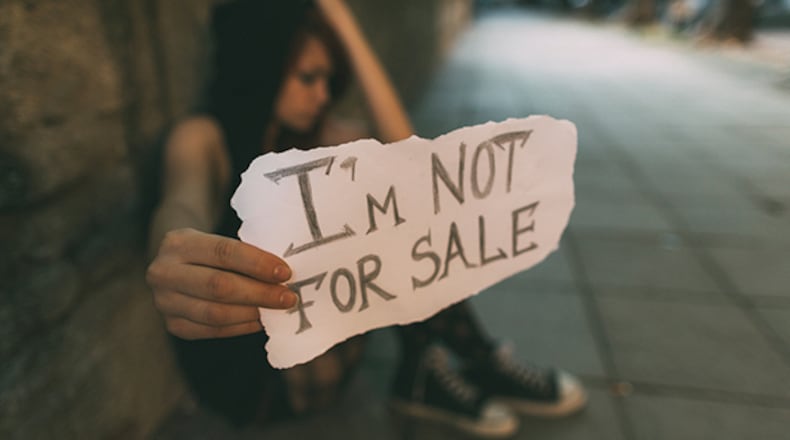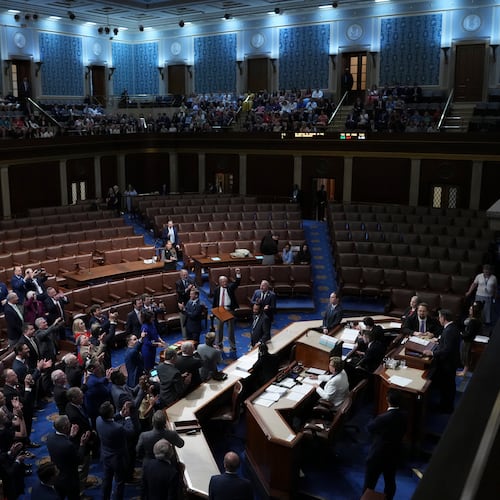“Too many to count.”
I hoped my face did not give away the bewilderment I felt. That’s the answer I would expect from this 16-year-old child when asked about the number of waffles she had for breakfast or winning rounds of Fortnite; not number of sexual partners she has had.
“Well, I’ve been sex trafficked, so too many to count.” This teen ran away from home, was approached by someone who offered to give her money, and suddenly found herself in the world of human trafficking. I listened, heartbroken, as she shared her story.
Human trafficking is slavery. Traffickers, or modern-day slave drivers, prey on the vulnerable, the young, and the poor by enticing them with things that they need, like money, food, and shelter, or sometimes things that they want, like nice clothes or shoes. In exchange, these victims are under their hold, performing either labor or sex acts. According to the United Nations Office on Drugs and Crime, human trafficking is defined as “the recruitment, transportation, transfer, harboring or receipt of persons, by means of the threat or use of force or other forms of coercion, of abduction, of fraud, of deception, of the abuse of power, of a position of vulnerability or of the giving or receiving of payments or benefits to achieve the consent of a person having control over another person, for the purpose of exploitation.”
Now, that description might sound like the premise of the movie “Taken,” but it can be subtler and more sinister than that. It can look like a woman in a relationship with a man who slowly encourages her to have sex with his friends for money. It can look like an immigrant promised a job, just to find out they are not getting paid and can’t leave. It can also look like my 16-year-old patient running away from home who is promised a better life. Sex trafficking is ubiquitous and happening in Atlanta. It’s in the obvious places like strip clubs, but also in the discrete places like that “massage parlor” across the street from the restaurant you like. Sex trafficking is inordinately difficult to study, and we may never know exact numbers, but a study by The Urban Institute involving eight major U.S. cities showed that Atlanta had the largest sex trade profits in 2007.
For people over 18 years old, the three big criteria that define trafficking are Force, Fraud or Coercion. For minors, as long as there is some exploitation for monetary or non-monetary gain, you do not have to prove force, fraud or coercion to call it trafficking, because minors cannot consent. While working in ERs in Atlanta, I’ve heard 16-year-old victims describe their sexual encounters as if it was simply what they learned in school that day. The stories of children getting approached by someone who offered to help them with money, and then finding themselves deep in a world of sex, drugs and danger are very common; according to the National Center for Missing and Exploited Children, an estimated one in seven endangered runaways were likely being sex trafficked.
But what can you do?
For adults who can consent, the conflation with voluntary sex work and compulsory trafficking makes helping these people very challenging. One may not be in a place to “screen” as we can do in the Emergency Department. We also might start to give in to our own judgment and biases, believing that people involved in sex work “did it to themselves.” There are voluntary sex workers, but that should not decrease our compassion for those who are forced into a life where they are not afforded the same freedoms as everyone else.
We can drop the mythological stereotypes of the buyers of these victims. They do not fit that of the seedy villains seen in a Hollywood blockbuster. In fact, much like in chattel slavery, the buyers, or “johns” typically match the demographic of the area. A study out of Minnesota found that the majority of buyers were employed, married, white males. Traffickers themselves also don’t have to look like older men with fur coats and pimp canes. They can look like your friendly female next-door neighbor, or like a classmate at your child’s school, recruiting others by showing off the latest kicks they’re wearing.
Finally, we must remember that trafficking is not a one-time thing that moves in and out of our cities. Even though research shows that mega-sporting events (like the one coming here in a few weeks) can cause a spike in online ads and activity, exaggerating numbers is not always helpful. This can lead to increased surveillance by police, but some of this increased surveillance without increased education can have unintended consequences, further hurting victims. Our community should provide supportive services rather than simply arresting victims. While it is a good idea to use any opportunity to increase awareness, we cannot forget that trafficking happens in our neighborhoods every day of the week.
As daunting as these challenges seem, we as citizens of Atlanta, can make this better. Organizations like Wellspring Living, and Tapestri find these persons after they are identified and help them put their lives back together. You can donate to them or others as we leave this holiday season, or fulfill your volunteering resolution by looking for opportunities in 2019.
Mentorship of young children in Atlanta is also crucial. You might not see immediate benefits, but through consistent mentorship, we might be preventing future runaways and decreasing risk factors. If your job interacts with the public, you can educate yourself on resources in the event that you meet someone in this situation. For instance, a number to keep in your wallet/purse is the National Human Trafficking Hotline, 1-888-373-7888. Finally, continue to read, learn and educate yourself. Together, we can work to combat trafficking during the Super Bowl and beyond.
About the Author
Keep Reading
The Latest
Featured



